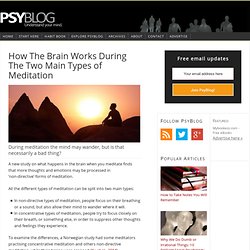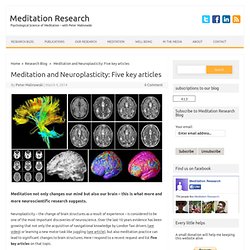

Stop Breathe & Think. Creative Meditation. Creative Meditation © 2005 by Corinne McLaughlin Developing a regular meditation practice over the last 30 years has been the most important aspect of my life, both in terms of my spiritual growth and the effectiveness of my service in the world.

I’d like to share with you some of what I’ve learned about types, benefits and techniques of meditation, especially the Creative Meditation approach: What is Meditation? Meditation is a journey deeper into your true self, your true home. Meditation is bringing your attention inward, and allowing your mind to settle into stillness. Meditation is the mind’s power to hold itself steady in the Light and in that Light to become aware of your higher purpose, your life’s mission. An especially powerful time to meditate and invoke higher spiritual forces is each month at the time of the full moon. Meditation is called a “practice” -- because it improves with practice. How The Brain Works During The Two Main Types of Meditation. During meditation the mind may wander, but is that necessarily a bad thing?

A new study on what happens in the brain when you meditate finds that more thoughts and emotions may be processed in ‘non-directive’ forms of meditation. All the different types of meditation can be split into two main types: In non-directive types of meditation, people focus on their breathing or a sound, but also allow their mind to wander where it will.In concentrative types of meditation, people try to focus closely on their breath, or something else, in order to suppress other thoughts and feelings they experience. To examine the differences, a Norwegian study had some meditators practising concentrative meditation and others non-directive meditation, while their brains were scanned (Xu et al., 2014).
One of the study’s authors, Svend Davanger, explained the results: “The study indicates that nondirective meditation allows for more room to process memories and emotions than during concentrated meditation.” Can't Stand Meditation? This Technique is For You. A consistent meditation practice is a struggle for even the most experienced of meditators.

For some reason it’s difficult to bring yourself to sit down and quiet the mind despite knowing that it’s the best thing for you. I was talking about this phenomenon with my good friend Phil Drolet of The Feel Good Lifestyle and he replied with a novel solution. “When you go to the gym, do you just do bench press the entire time?” Tweet I said “No, I do 5-7 different exercises depending on what muscles I’m working on.” “Exactly! The Method Instead of doing 20 solid minutes of meditation, Phil breaks it down into 5 4-minute intervals of different practices. 1-4 min — Breathing Focus 5-8 min — Your Favorite Mantra 9-12 min — Loving/Kindness 13-16 min — Gratitude 17-20 min — Intention Visualization This not only makes your session go by quickly, but also allows you to energize many different parts of your psyche and energy body. Is this a cop out? Yes and no. The Takeaway.
Meditation and Neuroplasticity: Five key articles. Meditation not only changes our mind but also our brain – this is what more and more neuroscientific research suggests.

Neuroplasticity – the change of brain structures as a result of experience – is considered to be one of the most important discoveries of neuroscience. Over the last 10 years evidence has been growing that not only the acquisition of navigational knowledge by London Taxi drivers (see video) or learning a new motor task like juggling (see article), but also meditation practice can lead to significant changes to brain structures. Here I respond to a recent request and list five key articles on that topic. Article 1: Meditation experience is associated with increased cortical thickness To my knowledge this is the first study showing differences in brain structure between meditators and non-meditators. Lazar, S. Doi: 10.1097/01.wnr.0000186598.66243.19 Article 2: Long-term meditation is associated with increased gray matter density in the brain stem Luders, E., Toga, A. This Video Shows How to Start Teaching Your Kids to Meditate. Mindfulness.